The passenger who appears to have inadvertently cut off fuel to the engine during a fatal FlyNYON doors-off helicopter flight was under the influence of alcohol at the time, newly released documents reveal. The documents also confirm previous reports that, in the moments before the aircraft plunged toward New York City’s East River, he had been working feverishly to obtain “shoe selfies” — the company’s oft-touted photographic souvenirs from the flights — and that activity likely contributed to the eventual crash.
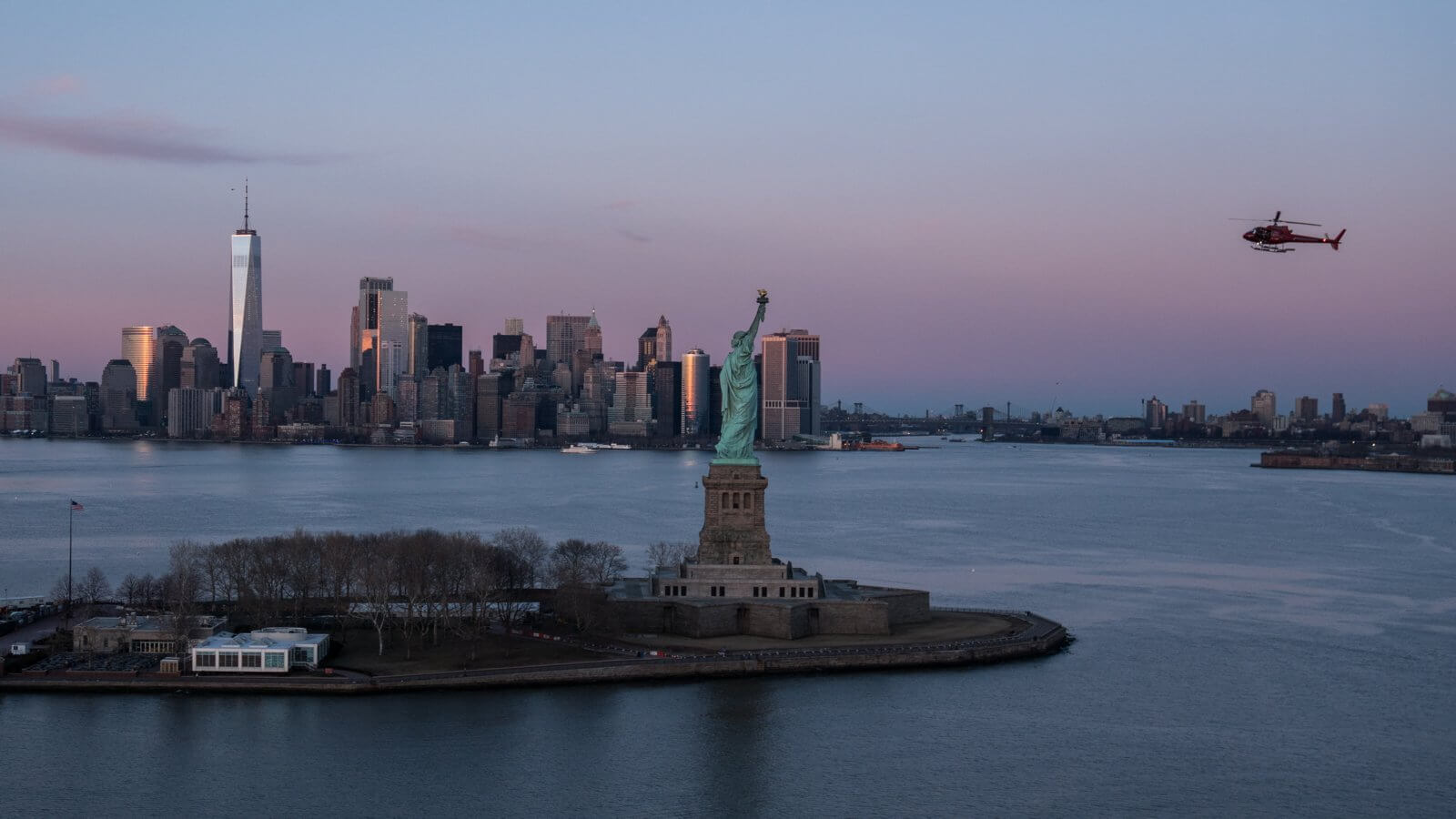
The documents — including a harrowing transcript of the accident flight — were released by the National Transportation Safety Board (NTSB) this week from its investigation into the March 11, 2018, crash of the Airbus AS350 B2 AStar, which had been chartered from Liberty Helicopters for one of FlyNYON’s signature doors-off photo flights. The five passengers on board the flight drowned after the helicopter overturned in the water and they were unable to free themselves from their harnesses.
The 75 files contained in the document release total more than 1,200 pages, encompassing interviews, factual reports, air traffic control data, wreckage analysis, pathological summaries, Federal Aviation Administration (FAA) paper trails, emails, internal meeting minutes, and more. The release of the evidence precedes the Board’s public hearing on Dec. 10, which will determine the accident’s probable cause. However, it is merely the latest stage in a long saga surrounding the accident, with observers questioning why all five passengers perished in what should have been a survivable crash and why FlyNYON can provide doors-off “photo flights” to untrained tourists in the first place — a product the company still enthusiastically offers.
Full disclosure: I was aboard a FlyNYON-operated companion flight that departed at the same time as the accident aircraft, as a photographer taking advantage of the pristine conditions to capture sunset views of the city. Because I witnessed the safety briefing and passenger-related pre-flight procedures, observed certain key details about the victims, and have a background in aviation journalism — and thus a degree of knowledge about the subject — I was interviewed by the NTSB in the aftermath of the crash, as well as by multiple media outlets. Notes from my NTSB interview are among the documents released yesterday, and they include key details that I withheld from my media interviews and my own coverage until the evidence could confirm them and validate their discussion.
The red Airbus AS350 B2, registered N350LH, was owned by Liberty Helicopters and branded with its logo as well as those of clients FlyNYON and Blade. It crashed into the East River on a cold but otherwise clear and pleasant late-winter Sunday evening. Video evidence suggests the immediate cause was the inadvertent activation of the fuel cutoff lever by the front-seat passenger, 26-year-old television journalist Trevor Cadigan. This lever sat on the cabin floor between the pilot’s seat and the bench occupied by Cadigan. (The four other passengers sat in the rear.) This action shut down the engine and forced the pilot to attempt an emergency landing in the river. This sequence was known soon after the crash, as the pilot, who survived, realized quickly what had happened but too late to recover the aircraft.
Exacerbating the situation, the right-side skid-mounted emergency floats failed to properly inflate. This caused the aircraft to list to that side immediately after touching down, then rotate fully upside down as the cabin filled with frigid East River water.
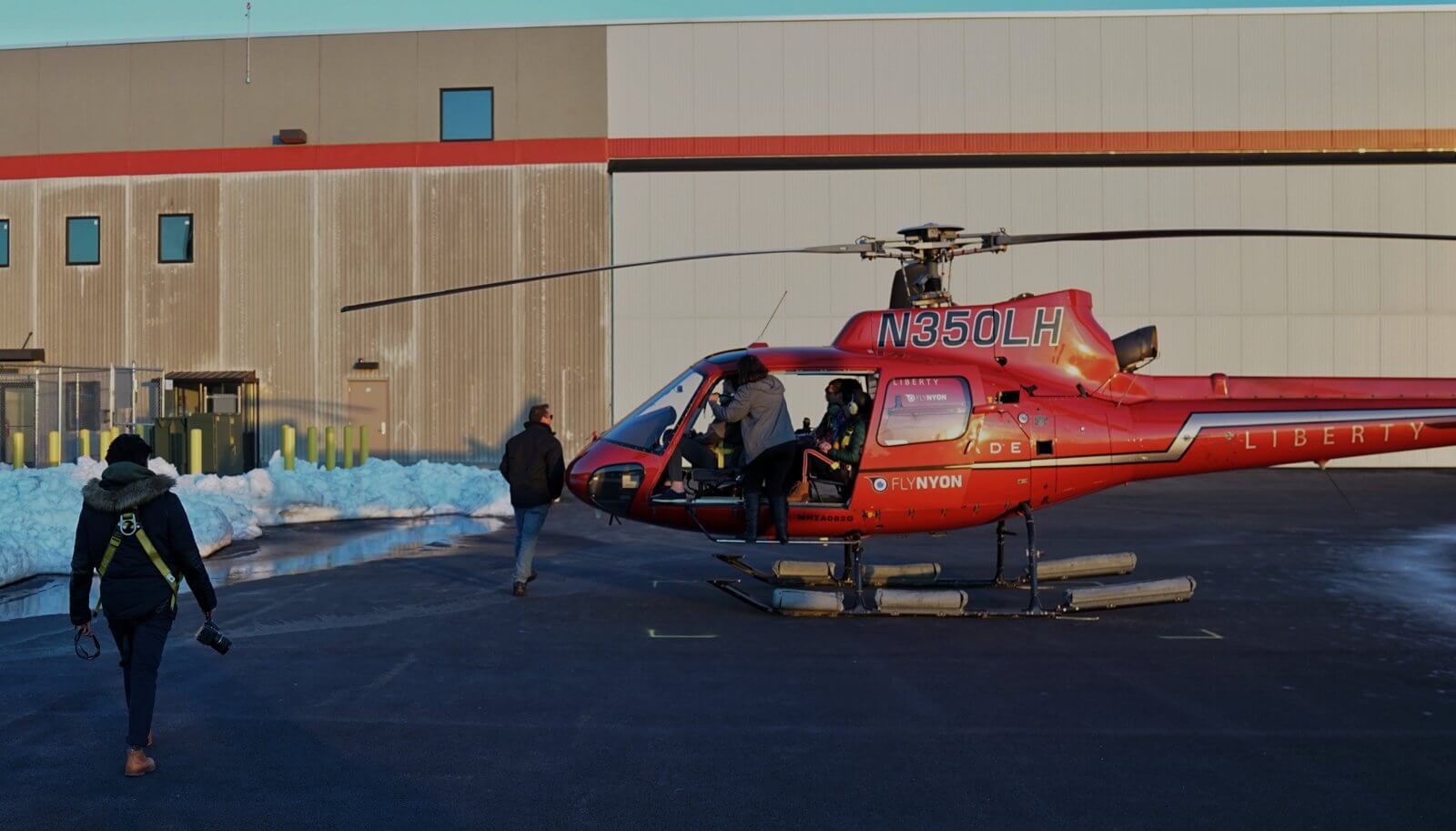
Because it was an open-door flight, ostensibly to allow unhindered views for photography, the five young passengers — most in their 20s — were tethered to anchor points in the cabin. They had no real understanding of how to extricate themselves in an emergency, nor any practice or training in how to do so, the documents and my own observations confirm. Their harnesses — purchased at Home Depot and of the type typically used by roofers — had no quick-release mechanism, nor were they approved by the FAA. The tethers, manufactured by rock-climbing gear manufacturer Metolius and each comprising multiple large loops in a daisy chain, were similarly not approved by the FAA for this purpose. They were affixed via screw locking carabiners to rings positioned between the passengers’ shoulder blades.
This tight anchoring, inaccessible carabiner, and lack of knowledge about the tethering system — based on my own experiences and my own interpretation of the evidence so far provided by the NTSB — prevented the passengers from freeing themselves. This would have been compounded by the shock impact of the cold water, confusion, and fear, which I learned during subsequent training in helicopter egress would have been as significant in inhibiting successful escape as their Home Depot harnesses. Nor could they simply slice their way out with the belt cutters attached to their harnesses — on my own flight, we were not shown where the cutters were, how to use them, or where to cut, and my own attempt to use an identical belt cutter on the Metolius tethers during a re-creation days later proved futile. According to a report by the medical examiner, all five victims survived the landing and died by drowning — something the egress expert I spoke with during my training described as neither “fast or painless.”
The NTSB’s newly-released documents, which confirm much of the above, will be used by the organization to determine probable cause and contributing factors. Based on the lines of questioning in the interviews and the types of evidence the NTSB investigators have gathered, it’s clear where their interest lies: the safety culture within FlyNYON, the passenger safety briefings, the emergency floats, and those harnesses. Even more worrying: the NTSB looks extensively at often contentious conversations among management and pilots about the unapproved harnesses in the months leading up to the accident, as well as the legality of offering doors-off flights to tourists. All of the documentation points to a cascade of failures on the part of FlyNYON, and likely extending to Liberty, flotation supplier DART Aerospace, and others. The documents also paint a damning picture of FAA principal operations inspectors who chose not to conduct surveillance of Liberty or FlyNYON, despite guidance that requires them to evaluate significant changes in their certificate holders’ operations — such as when they launch highly unorthodox, legally questionable doors-off tour flights.
Overwhelmingly, however, one of the most revealing parts of the document collection is the transcript of the cabin conversation, assembled from footage retrieved from a cabin-mounted GoPro and a passenger’s iPhone. While much of the investigation centers on survivability — the floats, the harnesses — the transcript sheds light on what might have led to the presumed fuel cutoff in the first place. Yes, it appears to have been the tether hooking under the fuel cutoff lever, but what set up that situation? Based on the transcript, the quest for the company’s so-called “shoe selfies” — FlyNYON’s heavily touted trademark social-media play, in which passengers take pictures of their feet dangling above the city — are a likely culprit, as is Cadigan’s possibly alcohol-influenced exuberance.
As I mentioned in my interview with the NTSB, I met Cadigan at the reception area shortly after I arrived, and detected a powerful odor of alcohol on his breath immediately. It was pronounced, and the toxicology report included in the NTSB’s documentation supports my observations, finding that Cadigan had “blood (femoral) ethanol 0.18 G%; vitreous humor ethanol 0.22%.” Although a person’s blood-alcohol concentration at the time of death can be difficult to establish, these two measurements suggest he was well beyond the legal blood-alcohol limit for driving. The pathology report for his friend on the flight, Brian McDaniel, also 26, records much lower figures — “blood (femoral) ethanol 0.03 g%; vitreous humor ethanol 0.04 g%” — and no ethanol observations are made for the other victims.
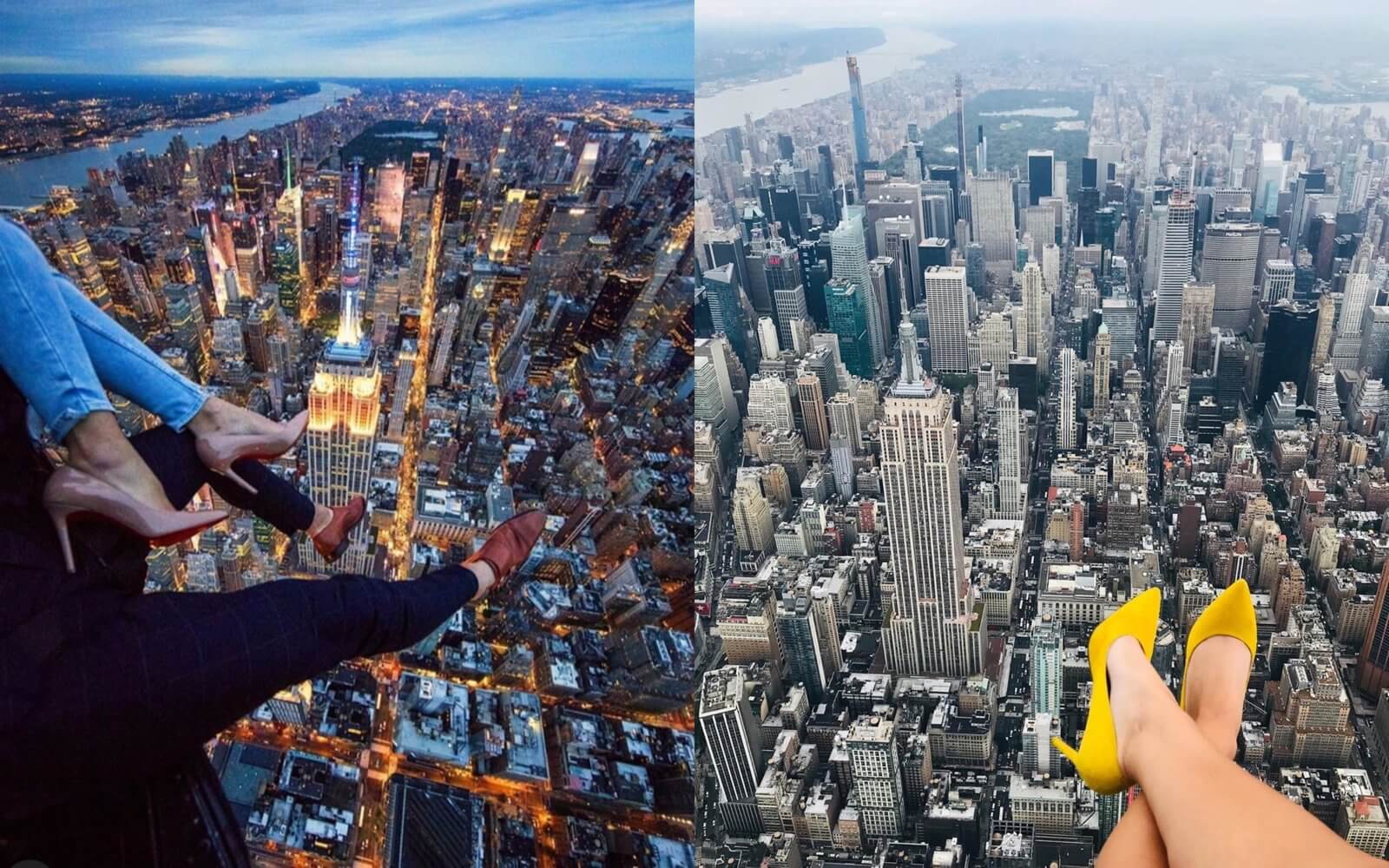
The question the Board will have to answer in December is what part this played in the accident itself, if any. Although I didn’t know it at the time, the Federal Aviation Regulations state that no pilot of a civil aircraft may allow a person who appears intoxicated to be carried in that aircraft, and Liberty’s flight operations manual also explicitly prohibits intoxicated passengers. Today, FlyNYON’s terms and conditions state that the company may refuse to fly a passenger who appears to be under the influence of drugs or alcohol, but there was no mention of that in the confirmation email I received before my flight.
Inebriation is hard to gauge, and assessing it in the absence of a breathalyzer typically tends to rest on noticeable evidence — such as behavior or coherence. At FlyNYON, it is ultimately the pilot’s call on whether to allow a passenger on board the aircraft, yet emails and text messages reproduced by the NTSB (and previously reported on by Vertical) document the pressure that pilots were under to please paying customers, and the repercussions they faced for delaying or declining flights for safety reasons.
Beyond the odor, Cadigan was behaving in a relatively loud and boisterous fashion and joking around so much that, in my view, he was slowing down our progress toward the aircraft. Though I was personally annoyed by his behavior — only because I was anxious to get into the air so we wouldn’t miss the sunset — I don’t fault him at all for this, nor do I fault him for what would happen later. He was simply having harmless fun that in any other context would’ve been no big deal. Ultimately, it’s the company’s responsibility to operate a safe flight, whether that means declining passengers or at the very least keeping them out of harm’s way. In my opinion, however, Cadigan was in no condition to fly in the front seat of a helicopter — an environment designed for sober, trained professionals — and especially not while strapped in via a looping tether with the potential to snag any number of helicopter controls.
The transcript, however, begins to paint an even more alarming picture almost from the moment the recording starts — especially because the pilot, Richard Vance, appears aware of Cadigan’s condition and even jokes about it. Cadigan begins horsing around right away and then jokes about his drinking. When McDaniel mentions that Trevor “had like five bloody marys before we even …” Cadigan chimed in with “yeah yeah — I am — I am — I’m a little twisted.” Another passenger then jokes that Cadigan “had some liquid courage.” Cadigan and McDaniel continue to joke about drinking, then Vance chimes in with “they tell us we’re not supposed to drink before we fly, too — but I mean come on.” This is clearly a joke and is described parenthetically as such in the transcript.

The banter continues and once in the air a few minutes later, Cadigan’s movement and actions seem to intensify, including him inadvertently unfastening his seat belt and appearing to struggle to start acquiring shoe selfies (though he remained tethered in). The transcript begins to note a degree of front-row jostling, as Cadigan moved from the window side of the bench (described as “Seat 2” in the transcript) to the side adjacent to the center pedestal and pilot’s controls (describe as “Seat 1”: “PS-2 [Cadigan] leaned into (leaned backward) the helicopter, his head was over the helicopter’s center pedestal. Around the same moment, the pilot reached with his left hand and tapped PS-2’s right shoulder, almost in a blocking motion. It appeared the pilot had given instruction to PS-2 to refasten PS-2’s factory installed rotorcraft restraint.” A few moments later: “The pilot’s left hand moved onto Seat 1, the pilot was either blocking PS-2 from leaning back or reaching for PS-2’s factory installed rotorcraft restraint. The pilot’s arm stayed on Seat 1 as PS-2 leaned back into the pilot’s arm.”
The Board did not include the audio or video itself in the documentation, so it’s difficult to say precisely how severe the movements were, or how distracting to the pilot — who under less chaotic conditions might have detected the tether’s proximity to the fuel lever — but the activity continued: “PS-2’s tether tail was visible hanging loose in the area of the floor mounted controls. The tether tail continued to hang loose in the area of the floor mounted controls, unless otherwise noted. As PS-2 leaned back to take shoe selfies, he was in the position of Seat 1, his carabiner was touching Seat 1’s right armrest.”
A few moments later: “PS-2 began leaning back substantially and freely as he sat between Seat 1 and Seat 2. PS-2 continued to take shoe selfies. PS-2’s torso was angled about 45 degrees backward, pointing his feet diagonally aft of the helicopter. PS-2’s right shoulder contacted the helicopter’s glareshield, his left shoulder was just above Seat 1’s armrest. PS-2 was leaning back in a plank-like position. As noted before, PS-2’s tether tail was still visible hanging in the vicinity of the floor mounted controls. ”
Next, the moment of the fuel cutoff appears to arrive: “PS-2 pulled on the helicopter assist handle to adjust his seating position, PS-2 rotated his body slightly right. The tether tail still appeared taut but had moved upward as a unit. The tether tail unit appeared to pop upward yet remained taut. Contact with the floor mounted controls was not visible, but the tautness of the tether tail led directly to that area.”
At this point, the helicopter begins its descent while Vance begins responding to the sudden emergency. The transcript describes Manhattan landmark structures moving past the camera’s field of view as the passengers begin to grasp their predicament. Vance tells them to prepare to exit the aircraft. At impact, per the transcript: “The camera’s rolling shutter exhibited signs of impact and G force in the Z-axis. PS-4’s headset was knocked off in the impact. The camera’s position changed slightly after impact. Only PS-2,-3 and -4 were visible. They appeared conscious and free from any obvious signs of blunt force trauma.”
One passenger asks how to cut the tether, another begins panting, the sounds of the rotors striking the water can be heard, and they all begin struggling to extricate themselves. “PS-2 [Cadigan] looked downward toward his chest and used both hands and manipulated the shoulder strap portions of his supplemental restraint. PS-2 performed this action until water later covered the GoPro’s lens.” Moments later: “PS-4 brought his left arm across his body toward the area of his right chest where the hook knife was previously visible. PS-4 looked down toward his right chest. The hook knife was never visible in his hand. PS-3 looked downward toward her chest.”
The camera quickly becomes obscured by the dark water, sound and movement diminishes, and the camera keeps recording until, sometime later, it picks up the sound of a boat maneuvering followed eventually by the sound of scuba equipment. The recording stops when the battery appears to die.
Unlike the passengers, Vance was held in by a conventional quick-release seatbelt. Nevertheless, in his interview with the NTSB, he described being “fully under water” by the time he unbuckled his seatbelt. Although he was weighed down by heavy winter clothing and the helicopter was “rolling on top of him” he managed to escape, and he crawled onto the inverted belly of the helicopter and waited for help to arrive. When it did, it was too late for the passengers. They had to be cut out by rescue divers.
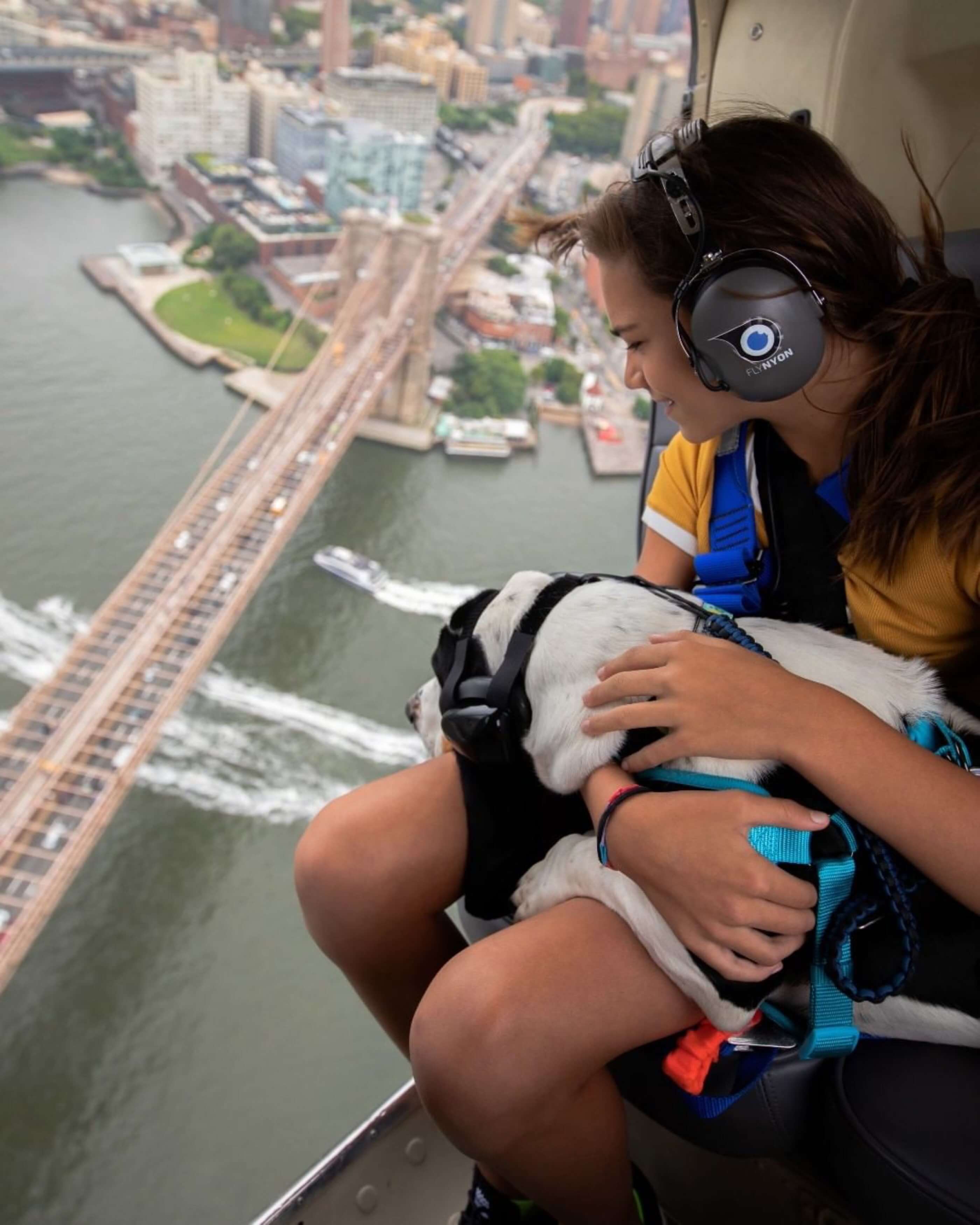
The transcript reveals a terrifying timeline of the passenger’s final moments, one that the NTSB links directly to the shoe-selfie phenomenon. In an adjacent note, the investigators explain their protocols for what to include in the transcript: “Throughout the flight portion, the passengers photographed their shoes and took ‘shoe selfies.’ The number of ‘shoe selfies’ were not specifically quantified but were numerous and frequently taken near visible landmarks. Shoe selfies were only noted in the transcript when determined to be of importance to a passenger’s positioning in their seat. Outside of the activity mentioned above, actions by the passengers were only transcribed if they met the following criteria: The action appeared to influence the safety of flight; The action appeared to influence the passenger’s survivability outcome; The action fell outside what might have been typical behavior for a photographic observation flight.”
Almost all of the moments that meet those criteria were generated by Cadigan. How much of that can be attributed to his apparent inebriation — versus his natural exuberance and FlyNYON marketing that explicitly promoted high-energy, adrenaline-inducing flight experiences — will presumably be decided by the Board and its advisors in the coming weeks. However, the Cadigan family attorney, Gary Robb, who has filed a lawsuit on the family’s behalf, told Vertical that the fact that their son was allowed on board the aircraft even when the customer experience crew and the pilot were “well aware that Trevor had been consuming alcohol beforehand” creates “even more of an issue for the defendant.” That Cadigan had then been secured to the helicopter in a harness from which he would have been unable to escape, even when sober, is “even more egregious in our judgment,” Robb said.
When contacted for comment on this story, FlyNYON failed to respond to the question of why it chose to anchor the passengers to the helicopter in such a manner. However, when asked about Cadigan’s presence on the flight despite visible intoxication, a spokesperson suggested that the question should be posed to Liberty — even though Cadigan was greeted, harnessed, and provided with a safety briefing by FlyNYON personnel. (A Liberty spokesperson did not immediately respond to a request for comment.)
When asked for general comments about the NTSB’s documentation, FlyNYON provided a statement that focused on the risks of floor-mounted fuel controls and the faulty flotation system. It concluded, “We shared our concerns with the NTSB and urge them to alert the FAA at the highest levels to ensure they are aware of these very serious safety issues.”





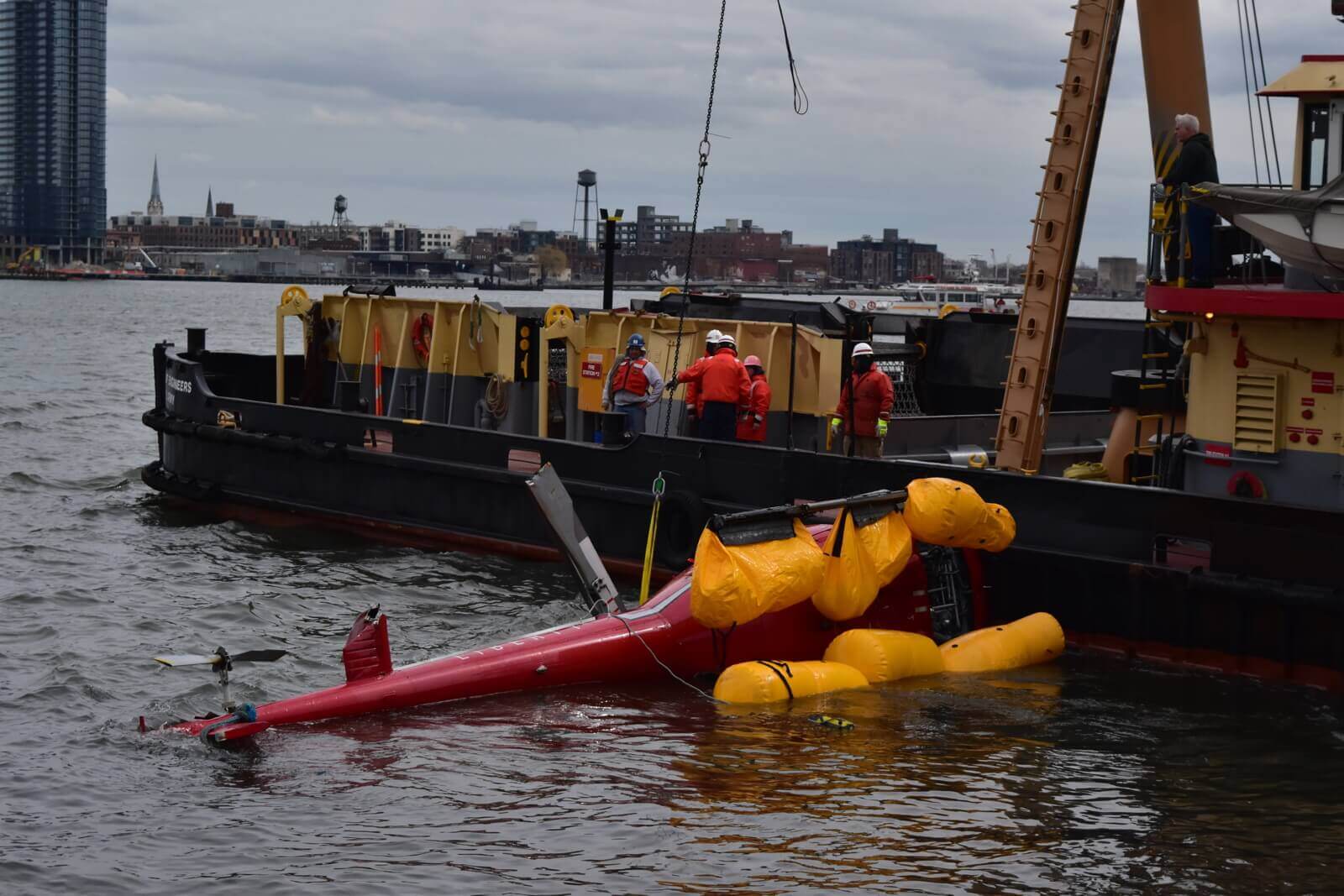




What a gong show, even worse is that they still allow this and dogs too? It’s pure lunacy to allow it to continue, helicopters are not amusement park rides for untrained yobs.
Great first hand article.
Seriously !!! unbelievable !! Why the FAA still let those operations continue with the same reckless behavior ??? Did anybody learn anything from this event ? it looks like it is lot more important to make money on human stupidity than having a controlled operation who could be safe. So now, the problem is fuel control on the floor, not this gun show with over pump people who want their shoe selfies ???? what a society we have !! does anybody understand that the idea to have a belt cutter in a total non sense because 99% of people will never be able to use it. When you crash in dark cold water, with a strong current, even with people trained to do under water egress, using this tool and being able to exit is gone be a very hard task. We do training and I would not like to be in this situation because my chance to be successful will be slim. As usual, the FAA is showing its incompetence and maybe they need another 5 dead to do something about it. It is clear that Fly Neon still does not care and now, they will probably blame the pilot who pushed to do the job anyway, as usual.
He is a devastating witness for the defense…and the plaintiffs. Great reporting.
Amazingly bad taste that their Twitter account still promotes pre-flight packages offering champagne. As recently as 10/11.